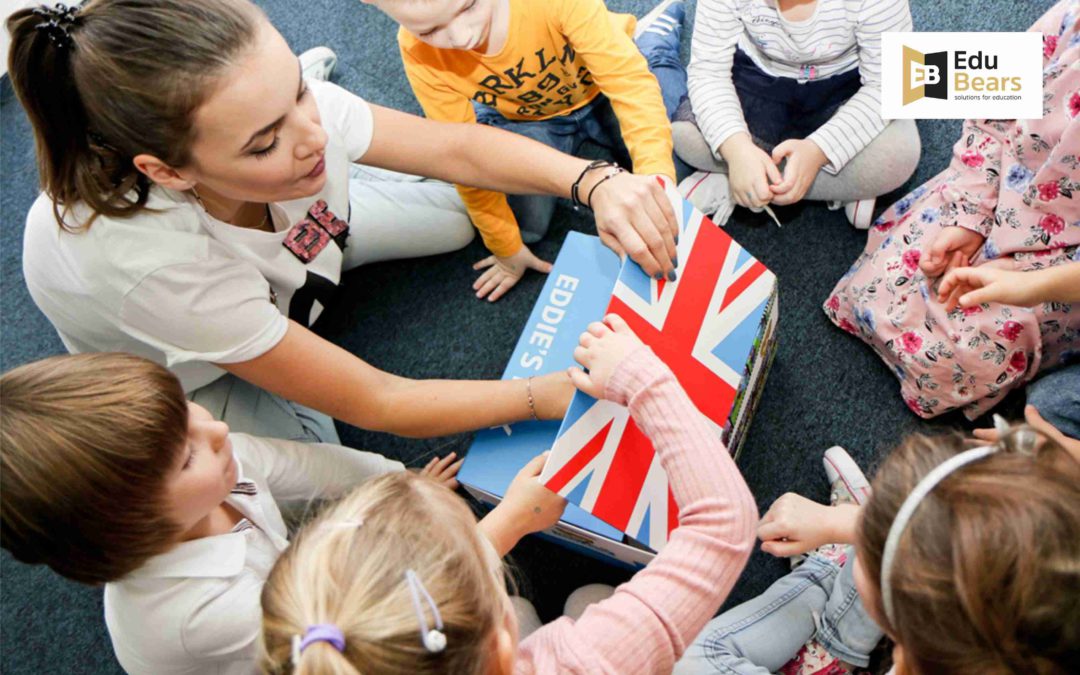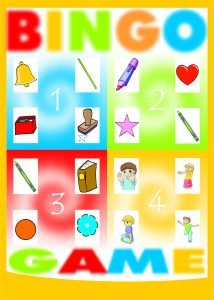In the previous article dedicated to teaching pre-school children I presented some advice on how to motivate young students and reward them wisely and effectively. This time I am going to describe a few games which may be practised in the YL classroom and at the same time focus on quite a controversial thing – pair-work and group-work. This series was first published in the Teacher Magazine in 2013/14.
Is it possible to experience some pair work or group work in YL classroom at all? I would argue that it is. And what is more, it may boost the effectiveness of your lessons and vastly contribute to time efficiency. And while some teachers believe that managing pre-schoolers effectively in such activity types verges on the impossible, I am convinced that once pair-work and group-work are mastered, they can bring a lot of good energy and motivate students as well as contribute to long lasting effects.
PAIR-WORK ANG GROUP WORK
Teacher-to-students interaction is dominant during pre-school courses, however, I strongly suggest that teacher should begin to introduce Student-to-Students and Student-to-Student interaction as soon as possible, by means of simple pair-work and group-work. In my opinion it is perfectly doable with kids as young as 4-years-old. For such work you need a lot of patience, of course. Do not get discouraged after a few failed attempts, and remember that at this point the lesson may become a little chaotic. But as soon as these short periods of pair work or group-work get going, they will be extremely beneficial for many reasons:
- they make lessons more efficient as more students are able to speak at the same time,
- they make more students interested and involved in an activity as they do not have to wait a long time for “their turn,”
- they make students feel that the game/exercise depends on them, to some extent at least
- they prepare students for later stages of education, when pair-work and group-work are indeed crucial
- they encourage early attempts at L2 communication and creativity in using L2 (with proper scaffolding provided by the teacher, naturally)
HOW TO INTRODUCE PAIR-WORK?
The easiest way to introduce pair-work is by means of a simple game. I would suggest a “Pizza Game” to start with. You need to prepare a picture of a pizza (one for each pair of students), cut in slices, with one (different) word to revise on each pizza slice:
THE PIZZA GAME PROCEDURE:
- Spin a crayon or move your index finger around the pictures. Students say, ‘Stop’ and you say the word.
- Every student spins the crayon/moves the finger in turn. Other students shout, ‘Stop’ and the student says the word.
- Pick two students and explain to the group that only these two are playing – one spins the crayon while the other says, ‘Stop’ – use L1 for better understanding.
- Make students sit in pairs facing each other and tell them to copy the procedure that they have just seen demonstrated.
- Support weaker / confused students.
- Monitor the group, praise when they try and reward whenever they succeed.
- Encourage students to use full sentences. Instead of saying: ‘a circle’ they should say ‘It’s a circle.’ or ‘I’ve got a circle.’
In the previous article I presented many ways of working with commands. Practising them is also a great way of introducing pair work. The procedure is as follows:
- Make students stand in a line and say some commands (jump u high, clap 6 times, don’t move etc.). Students do the actions.
- Pick a student and let him/her say the commands to others (you may whisper some to his/her ear if the student needs support).
- Pick a pair of students and explain that one should say some commands and the other should react. Tell all the children to watch the pair that is doing the demonstration as they will have to do the same (you might use L1 here).
- Make students stand in pairs facing his/her partner and tell them they are to imitate the action that they have just seen. Try to use L2 at this stage.
- Support weaker and confused students.
- Monitor the group. Praise when they try and reward whenever they succeed.
NOTE: It will be more fun and students will be more involved if you let them “do magic” (or pretend to be robots, or soldiers) – instead of “jump” students say “Abaracadabra, jump!” and move their “magic wands” (which may be ordinary markers or crayons).
The procedures above show step-by-step how to introduce pair-work by means of the Pizza Game and the Commands. These two are the easiest to start with in my opinion. If you succeed with pair-work here you will be able to introduce it in other activities, too.
HOW TO INTRODUCE GROUP-WORK?
The easiest way to introduce group-work, in my opinion, is through another game. I would suggest BINGO this time. The table below explains how to play it in a traditional way (teacher-students interaction – a few options are provided). Once it is mastered you may start to think of introducing group-work; the instruction is presented at the end if the procedure.
THE EXAMPLE BINGO SHEET:
Below you will see how to introduce group-work step-by-step, based on the BINGO GAME:
- Check which BINGO option suits your studentsbest.
- Play the game with your students. First you call out the words.
- Choose one student to take T’s part.
- After that ask students if they all want to be teachers – they always do!
- Divide students into 2 groups and choose one student to be “the teacher” in each group – make them sit in front of the rest of the kids.
- Monitor and scaffold students.
- Alternate the roles until each child has been the teacher.
If you succeed with pair-work and group-work once then you should be able to introduce it in other activities, too. Below I present The Restaurant Game which may revise and practise a different set of vocabulary (connected with food) and may be more effective and fun if you manage to sneak in an element of pair-work or group-work. Tips on how to do it are provided in the procedure – GOOD LUCK!
CLICK FOR THE NEXT EPISODE OF THIS SERIES.
If you like this article, let us know! Comment, like or share! Thank you!




